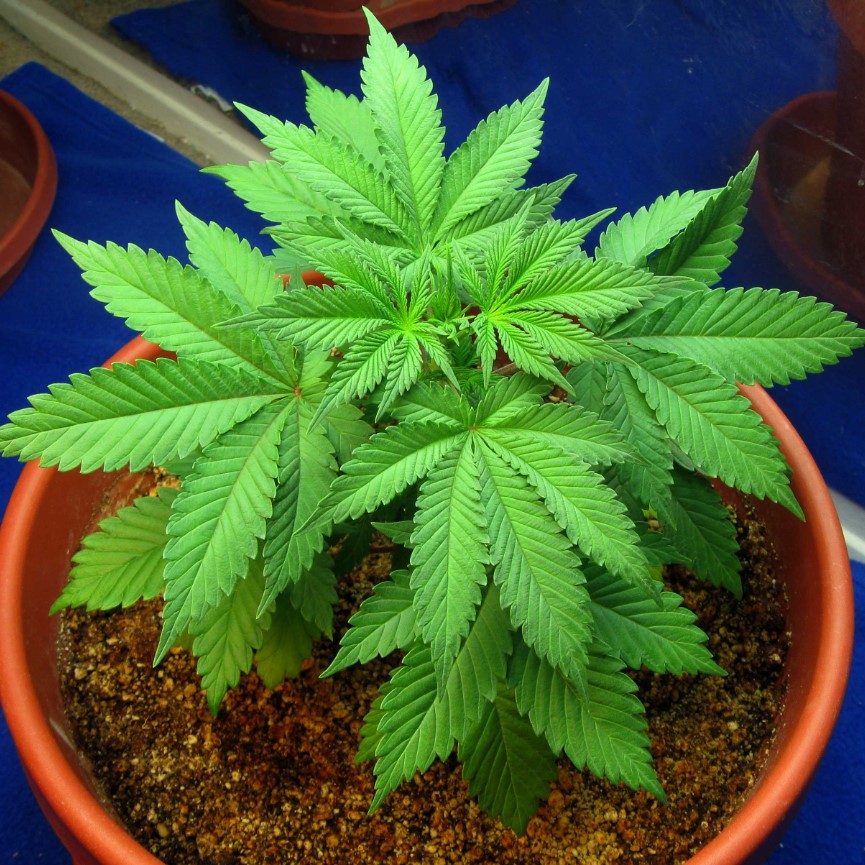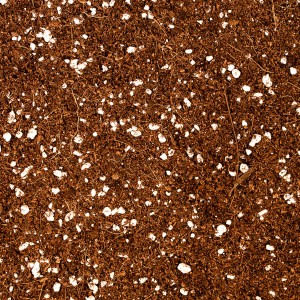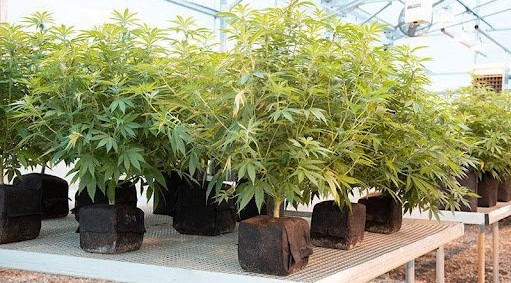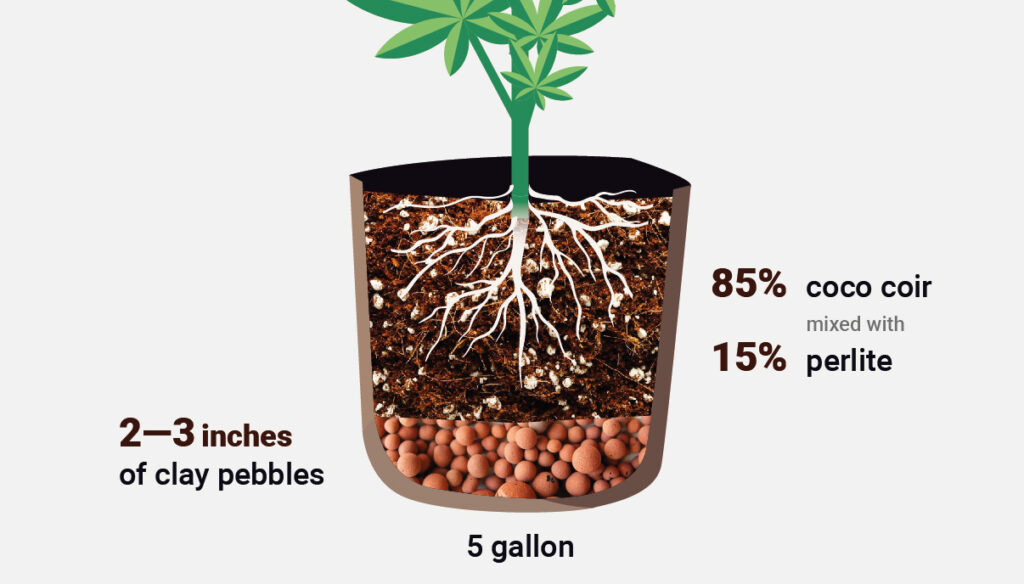Cannabis can be grown in coco coir, a soil-less growing medium made from the fibers of coconut husks. To grow cannabis in coco coir, you will need to prepare the coco coir by flushing it with pH-balanced water, then mixing it with a nutrient solution. The cannabis plants can then be planted directly into the coco coir. During the growing process, it is important to monitor the pH and nutrient levels in the coco coir and make adjustments as needed. Additionally, it’s crucial to ensure that plants receive adequate water and light to support healthy growth.
Coco coir is widely used for growing cannabis, vegetables, fruits, and flowers, and it’s widely recognized for its high water retention and oxygenation capabilities. It can be used on its own or mixed with other growing mediums to provide a well-draining, high-quality growing environment for plants.
Three main types of Coco Coir
- Coco Peat: Also known as coco pith or coir dust, this is the byproduct of the coconut fiber industry. It is made from the ground-up husks of coconuts and is a popular soil amendment or growing medium for plants.
- Coco Fiber: This is the coarse, fibrous material that surrounds the coconut. It is often used as a soil amendment to increase aeration and water retention in the soil.
- Coco Chips: These are large chunks of coconut fiber that are a byproduct of the coconut industry. They are often used as a soil amendment or as a hydroponic growing medium.
Growing cannabis in coco coir has several benefits, including:
- Coco coir is a sustainable and renewable growing medium, as it is made from the husks of coconuts, which are a byproduct of the coconut industry.
- Coco coir has excellent water-holding capacity, which can help to prevent over-watering and provide a consistent level of moisture for the plants.
- Coco coir is naturally resistant to pests and diseases, which can help to reduce the need for pesticides and fungicides.
- Coco coir has a neutral pH level, which makes it easy to maintain the ideal pH level for cannabis plants.
- Coco coir is lightweight and easy to work with, making it a convenient growing medium for both indoor and outdoor cultivation.
- Coco coir is also well-aerated, which allows for healthy root development and good drainage.
- Coco coir can be used as a standalone growing medium or mixed with other substrates to provide a more customized growing environment for cannabis plants.
Are There Any Disadvantages To Growing With Coco Coir?
Yes, there are some disadvantages to growing plants with coco coir. Some potential drawbacks include:
- High salt content: Coco coir can have a high salt content, which can be harmful to some plants if not properly rinsed before use.
- pH fluctuations: Coco coir can cause pH fluctuations, which can affect the availability of nutrients to the plants.
- Lack of beneficial microorganisms: Coco coir is a sterile growing medium, so it lacks the beneficial microorganisms that are found in soil.
- Expensive: Coco coir can be more expensive than other growing media, such as soil.
Overall, coco coir can be a great growing medium for some plants, but it’s important to consider these potential drawbacks before using it.
How to Rehydrate Coco Coir
Properly rehydrating coco coir involves a few steps:
- Rinse the coco coir: Rinse the coco coir thoroughly with water to remove any dust or debris and to lower the salt content. This can be done by using a colander or a fine mesh strainer.
- Soak the coco coir: Place the rinsed coco coir in a container and add water. Allow it to soak for at least 12 hours, or overnight, to fully rehydrate.
- Drain the water: Drain any excess water from the container after the coco coir has soaked.
- Adjust the pH: Coco coir has a pH of around 6.0-6.5, which may be too alkaline for some plants. It is recommended to adjust the pH of the rehydrated coco coir to around 5.5-6.0 using a pH meter or test kit.
- Test the water content: Coco coir should be hydrated to around 60-70% water content before use. You can use your hand to test the water content, if it’s too dry it will be hard, if it’s too wet it will be soggy.
- Fertilize: Coco coir is an inert growing medium, so it lacks the beneficial microorganisms found in soil. Therefore, it is necessary to add fertilizer to the rehydrated coco coir.
By following these steps, you can properly rehydrate coco coir and ensure that it is in optimal condition for growing plants.
Nutrient feeding tips for growing plants in coco coir:
- Start with a balanced nutrient solution: Coco coir is an inert growing medium, so it does not contain any nutrients. Therefore, it is important to start with a balanced nutrient solution that contains primary nutrients (nitrogen, phosphorus, and potassium) as well as secondary nutrients (calcium, magnesium, and sulfur) and trace elements.
- Monitor nutrient levels regularly: Coco coir can cause pH fluctuations, so it’s important to monitor nutrient levels regularly using a pH meter or test kit, and adjust as needed to ensure optimal levels for plant growth.
- Use a fertilizer specifically formulated for coco coir: Some fertilizers are specifically formulated for use with coco coir, and contain the right ratio of nutrients for optimal plant growth in this medium.
- Use a Calcium and Magnesium supplement: Coco coir is known to be low in calcium and magnesium, which are essential for plant growth. It is recommended to use a Calcium and Magnesium supplement to boost the levels of these nutrients in the coco coir.
- Use a wetting agent: Coco coir can be hydrophobic, meaning it repels water, which can make it difficult for plants to absorb nutrients. Using a wetting agent can help to improve water retention and nutrient absorption in coco coir.
- Use a silica supplement: Silica is beneficial for plant growth and can help to strengthen the plant structure, which can be beneficial in coco coir as it can help the plant to be more resistant to disease.
By following these tips, you can ensure that your plants are getting the nutrients they need to thrive in coco coir.




